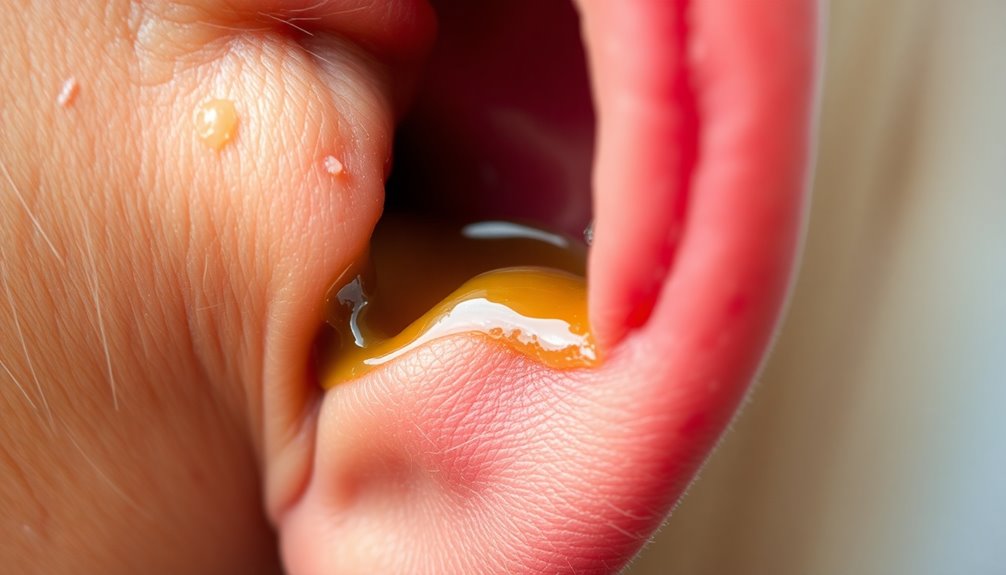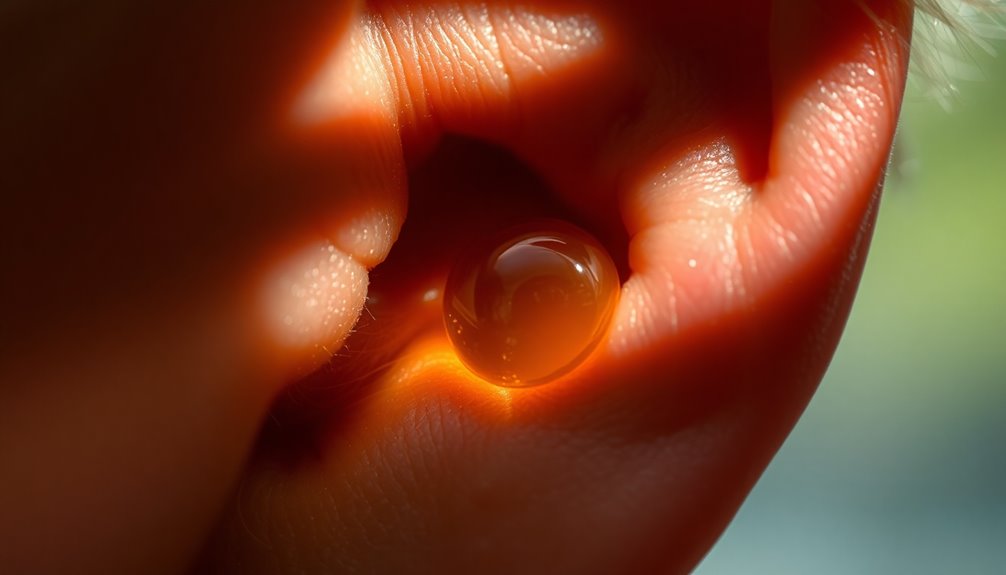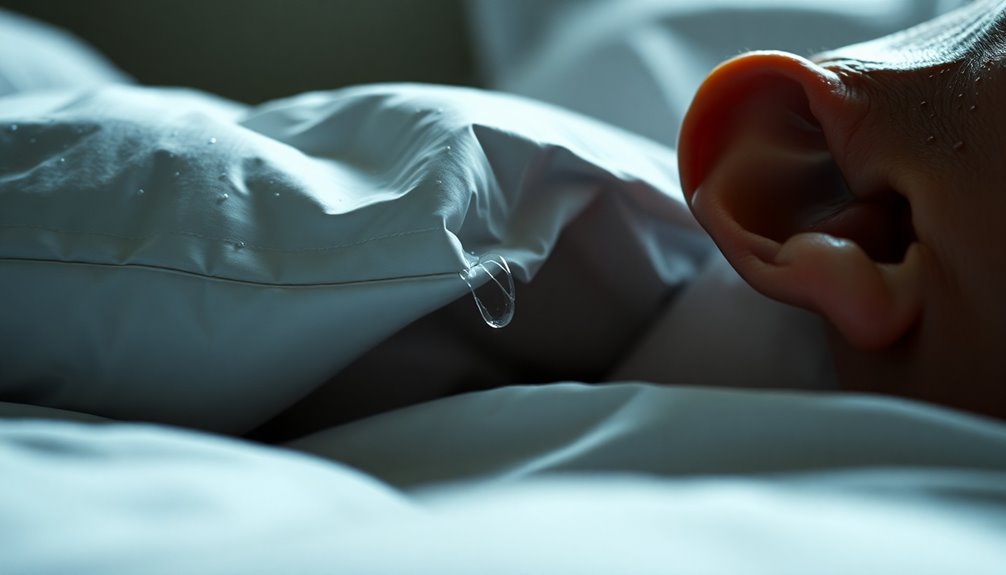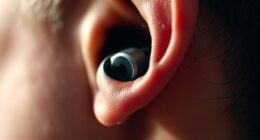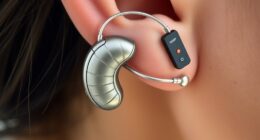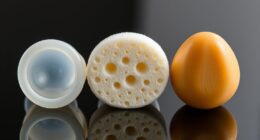Using an ear wax removal tool camera can be a shocking experience as you witness firsthand the state of your inner ear. These cameras provide a clear view of ear wax buildup, helping you understand potential blockages and their impact on your hearing. However, there are safety concerns, like pushing wax deeper or risking eardrum damage if not used carefully. While they offer real-time feedback, many users report issues with picture quality and stability. If you're curious about the best practices for ear care and the safest removal methods, there's a lot more to explore.
Key Takeaways
- Ear wax cameras provide a real-time visual of ear canal conditions, revealing ear wax types and buildup levels.
- Shocking footage can highlight excessive ear wax accumulation, prompting awareness of potential hearing issues.
- Users may encounter difficulties with picture quality, such as movement lag and depth perception challenges during use.
- Professional cleaning methods, like microsuction, are safer than home camera use, which may push wax deeper.
- Regular monitoring of ear health is crucial, as accumulated wax can lead to discomfort and impaired hearing.
Effectiveness of Ear Wax Cameras
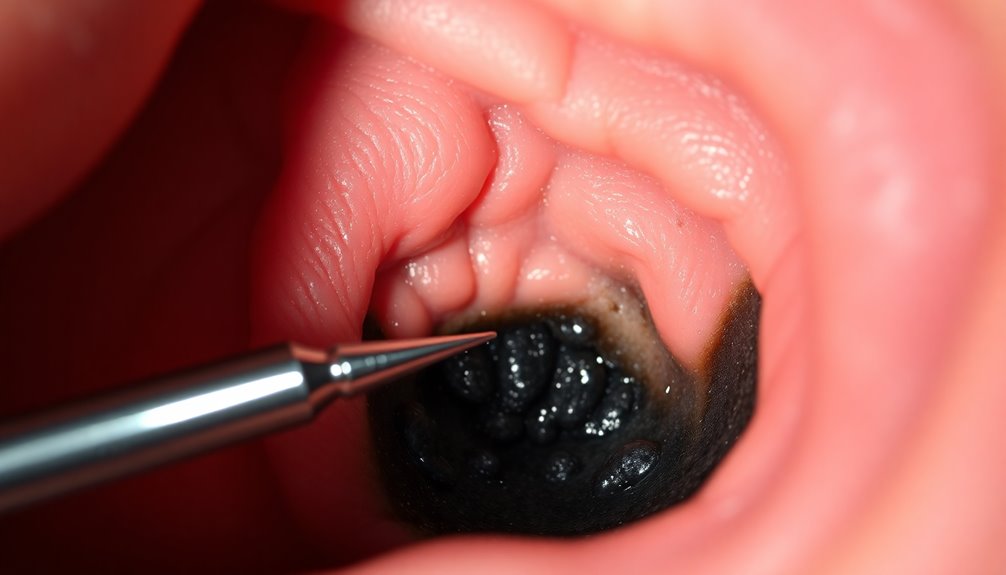
When you look into using ear wax cameras, it's important to understand their effectiveness in detecting ear wax and other issues.
These cameras help visualize the ear canal, allowing you to see the condition of your ears. You can identify different types of ear wax, from soft yellow to hard dark brown, and determine if a cleaning appointment is necessary. Visual inspection can reveal whether ear wax is occluding the ear canal, which might require professional intervention. Additionally, these tools can provide visibility into the ear canal, making it easier to monitor ear health over time.
However, while ear cameras can show you what's going on, they aren't effective for actual ear wax removal. Using them at home might lead to compacting the wax instead of removing it entirely.
Unlike professional tools, like microsuction devices, at-home cameras lack the precision needed for safe ear cleaning. The cameras available to the public don't match the effectiveness or safety standards of professional equipment, making them inadequate for thorough removal.
Though these devices are user-friendly and let you see inside your ear, their practicality for ear wax removal is questionable. For reliable results, professional interventions with validated tools are the way to go.
Safety Concerns of Usage
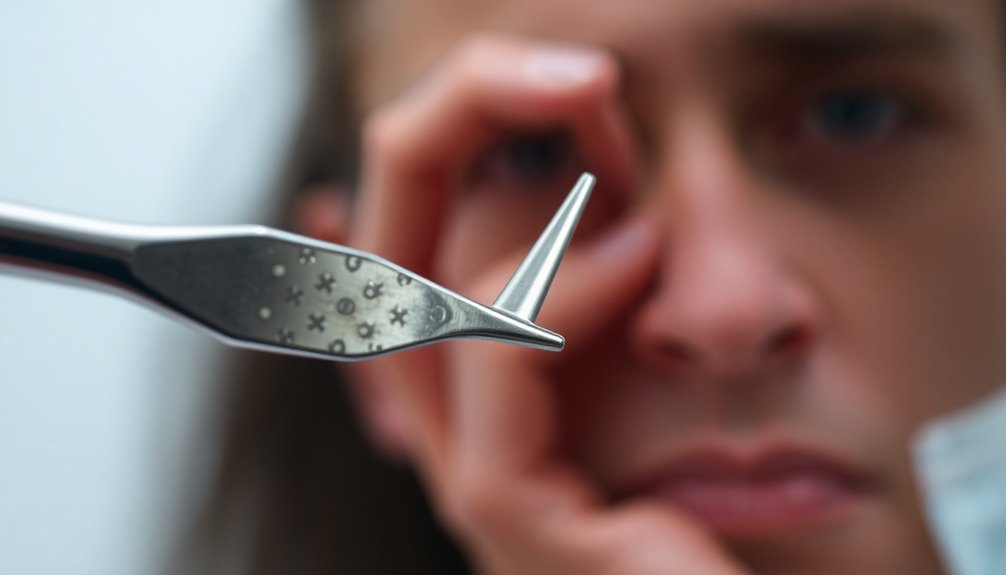
Using ear wax removal cameras at home may seem convenient, but they come with significant safety concerns.
First and foremost, inserting the camera can scratch or abrade the sensitive skin of your ear canal, causing pain. Even worse, there's a real risk of puncturing your eardrum, leading to immediate sharp pain, ringing in your ear, or even hearing loss. Keep in mind that the ear canal and eardrum are incredibly delicate, making them prone to serious damage. Moreover, Dr. Peerless emphasizes that anatomical variations in ears complicate cleaning, which can lead to further issues during at-home attempts. Individuals with certain conditions, such as emotional dysregulation, may be more prone to impulsive behaviors like using unsafe ear cleaning tools.
Moreover, using at-home tools that aren't sterile can expose your ear to harmful bacteria and fungi, increasing the risk of infections. Scrapes or scratches during the cleaning process can further heighten this risk.
If you notice pain, difficulty hearing, or bleeding after using the tool, these are signs that you've likely caused damage.
Healthcare professionals strongly advise against using these at-home tools. Instead, they recommend safer alternatives like wax softeners or visiting a specialist for professional earwax removal.
Design and Functionality Issues
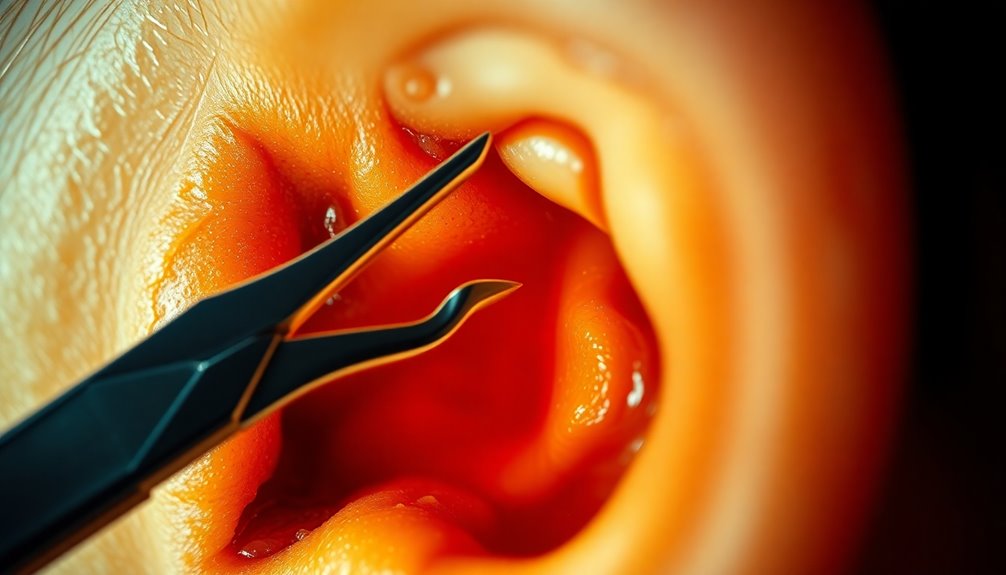
Many users quickly run into design and functionality issues with ear wax removal tool cameras. You might find the picture quality disappointing, with movement lag making it hard to get a clear view of your ear canal. Depth perception becomes a challenge, leaving you unsure about how close you're to the eardrum.
Keeping your hand steady while trying to remove visible wax can turn into a frustrating ordeal, especially when one-handed use is touted but proves tricky in practice. The camera size can be an issue too, as it may not fit comfortably in all ear canals.
Flimsy metal loops or wire attachments often move around too much, complicating the wax removal process. Additionally, the removable tips may not offer the precision you need, and their material might fall short compared to professional instruments.
When it comes to connectivity, you may experience lag or poor streaming quality, and the process of connecting to your smart device can be cumbersome. Lastly, the design doesn't accommodate the varied sizes of ear canals, making it less accessible for different age groups, including children and pets. Furthermore, many of these devices raise safety concerns regarding ear cleaning practices due to the potential for significant trauma or damage to the ear canal.
Comparative Analysis With Other Methods

Design and functionality issues often lead users to seek alternative ear wax removal methods. While the ear wax removal tool camera might seem appealing, its effectiveness pales in comparison to other options.
For instance, microsuction boasts a high success rate of 91% and is considered the gold standard in ear wax removal. This method is safe, minimally invasive, and performed by trained practitioners, ensuring a clear view of the ear canal. Additionally, professional care enhances the quality of life by addressing hearing issues related to wax buildup. Regular follow-ups are also essential for monitoring any ongoing ear health concerns.
Manual instrument removal also delivers precise results and is best left to healthcare professionals, especially for stubborn wax. Ear irrigation can work, but it carries risks like eardrum perforation and often requires multiple sessions.
Ear drops can soften wax effectively, but they may not fully clear severe buildups and can be time-consuming due to the need for repeated applications.
In contrast, the ear wax removal tool camera can be inefficient, potentially pushing wax deeper into the ear canal and increasing the risk of damage or infection.
User Experience and Feedback

A growing number of users have found the ear wax removal tool camera to be an invaluable addition to their home care routine. The setup process is easy and straightforward, allowing you to connect the device to your smartphone or tablet via WiFi for real-time viewing. With clear instructions and a user-friendly app, you'll appreciate the high-definition camera's clarity and quality, which many users rave about. Satisfaction levels are high, with positive feedback highlighting the device's convenience and cost-effectiveness. Users have also reported that it helps identify other ear issues, such as cysts, making it a recommended tool for every family. Safety is paramount; the real-time visual feedback enhances precision, reducing the risk of accidental ear damage. Additionally, the device includes snap-in eartips that prevent dislodgement during use, further ensuring user safety. While navigating the ear canal, it's crucial to proceed slowly and carefully to avoid discomfort. The tool comes with various attachments, enhancing its versatility, and the included USB-C charger makes recharging simple. You can even take photos of your ear canal for medical consultations, adding to its value. Overall, this device transforms ear care, making it safer and more effective than traditional methods.
Alternative Ear Wax Removal Techniques

When it comes to ear wax removal, various techniques offer safe and effective alternatives to over-the-counter solutions. You can start with home remedies like hydrogen peroxide. Just apply a few drops on a damp cotton ball and tilt your head to let it drip into your ear canal.
Another option is using warm water with a rubber ball syringe; gently drip the water into your ear, avoiding forceful flushing. Earwax is a yellowish, waxy substance produced by sebaceous glands, and excessive accumulation can lead to blockages and hearing issues.
For softening ear wax, ear drops like baby oil or glycerin can be effective. Apply a few drops, wait a few minutes, then tilt your head to let the wax drain out.
Just remember to avoid olive oil and cotton swabs, as these can push wax deeper.
If you prefer professional methods, consider microsuction, where a doctor safely removes the wax using suction. They might also use an otoscope for examination or manual removal with a curette.
Regardless of the method, ensure your eardrum is intact and avoid sharp objects.
If symptoms persist, consulting a healthcare provider is essential for safe ear wax removal.
Frequently Asked Questions
Can Ear Wax Cameras Be Used for Other Medical Purposes?
Yes, ear wax cameras can be used for various medical purposes.
They help you inspect your ear canal before hearing tests, assess ear wax conditions, and detect abnormalities related to ear health. By providing clear visuals, these cameras enable accurate diagnosis of ear pathologies.
They're especially useful for monitoring ear health in patients with complex conditions or after surgeries.
Just remember to use them carefully to avoid any potential damage to your ear.
What Is the Price Range for Ear Wax Removal Tool Cameras?
When you're looking for ear wax removal tool cameras, you'll find prices typically range from around €30 to over €60, depending on the brand and features.
For instance, Waxsee Pro is currently priced at €30, down from €60, and offers free shipping for multiple purchases.
Other brands like ScopeAround and Vitcoco may vary.
Always check for included accessories and return policies to ensure you're getting the best value for your money.
Are There Specific Brands Recommended for Ear Wax Removal Cameras?
When choosing an ear wax removal camera, you'll find several top-rated brands.
BEBIRD offers models like the Note3 Pro with a 10 Megapixel HD camera and plenty of cleaning tools.
Waxsee's Pro model stands out with its precise live feed feature.
DEETOK also provides a solid option with a 1080P camera.
Lastly, ScopeAround ensures safety with its interchangeable silicone tips.
Each brand has unique features, so consider what suits your needs best!
How Do I Clean the Camera After Use?
To clean the camera after use, you should thoroughly wipe it down with disinfectant wipes or a sanitizing solution.
Make sure to clean all attachments and the speculum separately to prevent cross-contamination.
Avoid harsh chemicals that could damage the device.
Once cleaned, dry all parts completely before storing them.
Always check for any signs of wear or damage before you store it, ensuring the device remains effective and hygienic.
Is Professional Training Required to Use These Cameras Safely?
Yes, professional training is essential for using these cameras safely. Without proper training, you risk damaging your ear canal or eardrum, and you might misdiagnose ear issues.
Professionals know how to handle the equipment effectively, ensuring safe techniques and accurate diagnoses. They also use specialized tools designed for comfort and safety, which aren't available in consumer models.
Conclusion
In conclusion, while ear wax removal cameras can offer an intriguing glimpse into your inner ear, their effectiveness and safety should be carefully considered. You might find the design and functionality lacking compared to traditional methods, and user experiences vary widely. Remember, there are alternative techniques available that might serve you better without the risks associated with DIY tools. Always prioritize safety and consult a professional if you're unsure about your ear health.


